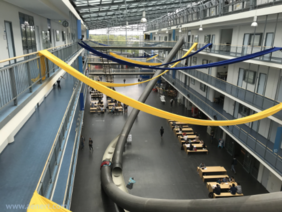In November Global Dossier Task Force (GDTF) published a consecutive statistical report concerning the patenting activity in five major patent offices of the world (IP5) for 2017, with additional data for the preceding year. The data provided by the authors of the report is impressive. In 2016 the patent offices of the USA (USPTO), Japan (JPO), South Korea (KIPO), EPC states (EPO) and China (CNIPA), who combined their efforts in the field of information exchange several years ago, accumulated 91% of the patents in force out of almost 12 million throughout the world. In addition, 94% of patent applications were admitted to examination by these offices in 2016, which left only 6% for the rest of the world. In 2017 these offices granted 1.2 million patents (4.5% growth) and admitted 2.7 million patent applications (1.8% growth) to examination.
According to the data provided in the report, at the end of 2016 the majority of patents in force were concentrated in EPO (27%) and USPTO (23%). In 2017 the EPO substantially strengthened its leading position by issuing more than 10% more patents and admitting to examination almost 4% more applications than in the previous year. Even more patents were granted by KIPO (10.8% growth); however, at the same time the number of patent applications admitted to examination by this office declined almost by 2%. In 2017, just as in the course of the previous five-six years, the Chinese patent office CNIPA was leading by the number of published applications, demonstrating growth of 14%. Moreover, the Chinese office is also leading in terms of the absolute number of admitted patent applications, outpacing its nearest follower (the US office) by more than two times and any of the remaining participants of the GDTF by several times. The number of patents granted by USPTO increased by 5.2%, while the respective number at JPO decreased by 1.7%.
In 2017 between 78% - 90% of the applicants filing patent applications in KIPO, JPO and CNIPA were residents. In USPTO this share comprised 50%, while in EPO this figure was even less, 47%. In the previous year, according to the report, the patent offices of China and the USA were the most popular among participants. The residents of almost all participating countries filed substantially more patent applications in USPTO than their respective patent offices accepted from the residents of the USA. The only exception here is CNIPA, which accepted fewer patent applications from US residents than vice versa. In CNIPA the residents of all remaining GDTF participating countries filed substantially or even many times more patent applications than accepted from Chinese residents. The residents of the USA and Europe prevailed among applicants filing patent applications in the Japanese patent office. In EPO the representatives of the USA and Japan were dominating among the non-resident applicants, while in KIPO the numbers of documents filed by the representatives of Japan, Europe and the USA roughly equal.
Comparative data representing the distribution of patents and patent applications by different technologies is particularly interesting. Taking into consideration the fact that the average patent pending time (time period between the filing date and the patent grant date) usually comprises 5-6 years, this data makes it possible to trace the priorities of inventors and their alterations over time. The revision of summarized data shows that the groups of technologies directly related to the energy industry (electrical machinery, apparatus and energy) were dominant both in case of patents and applications. In 2017 the share of these technologies for patent applications comprised 6% - 9% from the total number of documents, with JPO and KIPO being the leaders. However, for patents this number was somewhat larger. For example, in EPO the share of energy-related technologies decreased from 7% to 6% when passing from patents to applications, in JPO it decreased from 10% to 9%, in CNIPA – from 8% to 6%, in KIPO – from 9% to 8%. In USPTO this share remained unchanged. When comparing the data for 2017 and 2016 a sharp growth in the number of granted patents in all offices, except for the US patent office, catches the attention (EPO – 16% growth, KIPO – 18% growth). In the meantime, the number of admitted patent applications declined in all offices except for EPO.
For technical subjects closely related to the energy industry (engines, pumps, turbines; transport; chemical engineering; environmental technology), a similar pattern but to a lesser degree can be observed. In the Chinese patent office, which in 2017 admitted to examination more patent applications than any other office (almost 1.4 million), the inventors demonstrated the strongest interest in computer technology – 7%; electrical machinery, apparatus, energy and measurement – 6% each.
For more details see IP5 Statistics Report 2017 Edition.
